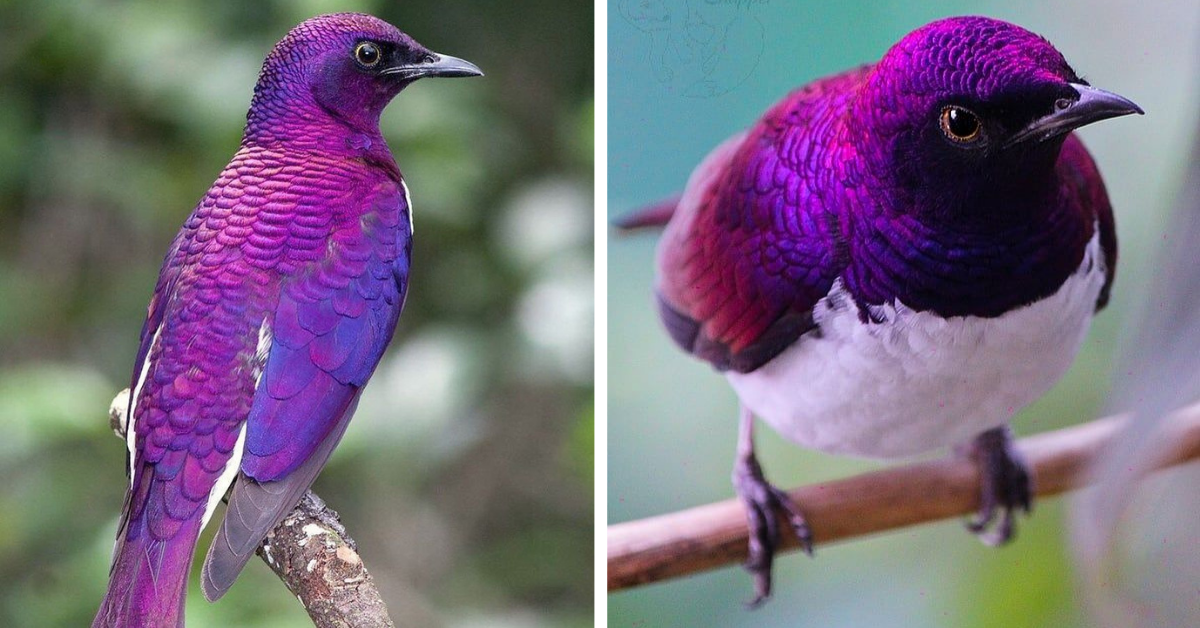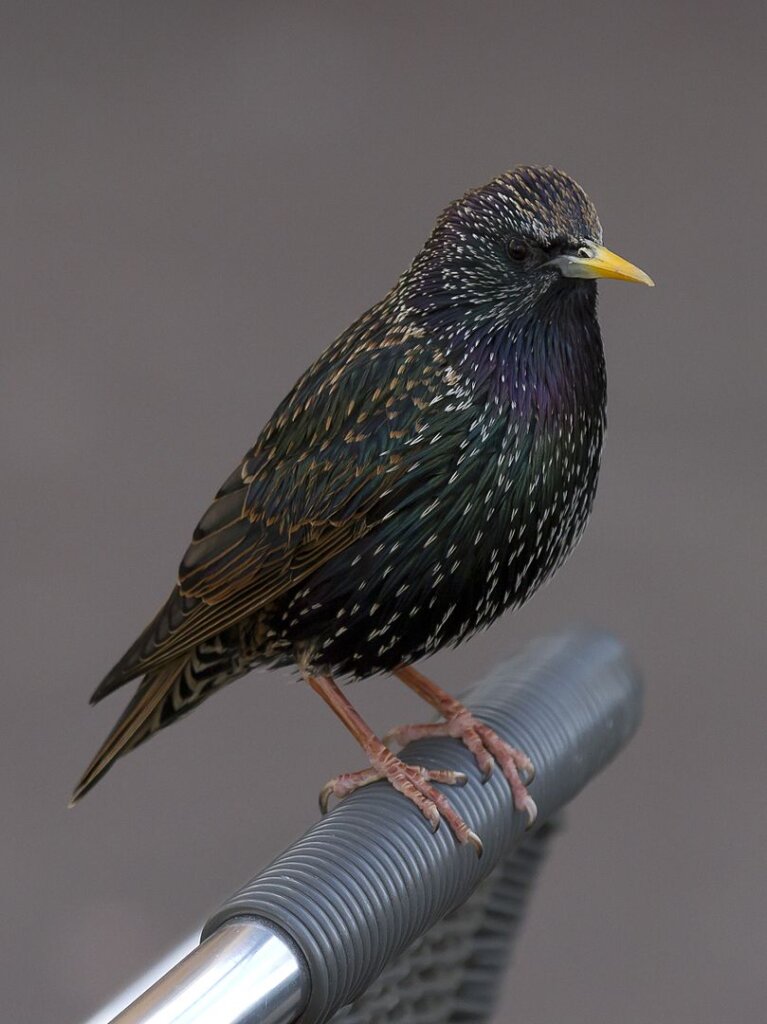A Flying Gemstone Of An Invader That Brings All Of His Bad Eating Habits To North America – The Amethyst Starling!

Spring is almost like the world celebrating life with plants bursting into flowers and multitudes of birds bursting into song.
Speaking of birds bursting into song, one we hear a lot of at springtime is the Starling, giving life to many urban gardens in the United States. One, in particular, standing out from other starling species is the Amethyst Starling, once you’ve seen one you’ll immediately know why they have earned this gem of a name.
The Amethyst Starling (Cinnyricinlus leucogaster), hales from northern South Africa, all the way up to Senegal on the west coast of the continent, up to northern Tanzania on the east coast. Loving woodland, savanna forest edges, and riverine habitats, Amethyst starlings are considered to be nice birds, but do tend to be invasive, pushing out other species as they move in.
Birds, understandably, feature prominently in human culture. No more so than in plays and poetry. They feature in many of Shakespeare’s plays and sonnets, Wrens, owls, nightingales, and larks, along with 60 other species have well and early earned their place in people’s hearts because of the playwright’s talent.
So much so that, Eugene Schieffelin, a German immigrant, introduced many of the bard’s birds to North America. One of the English bard’s birds, however, has become somewhat of a nuisance in the United States.
During his time as the chairman of the American Acclimatization society that 60 European starlings were released into New York’s Central Park in the hope, they would start breeding.
Related Reading:
Unfortunately, they did, and now the US is home to an estimated 200 million European starlings.

Like most starling species, they tend to eat whatever they can get their hands on. In their native habitat, that means everything from insects, to tree frogs, to fruits and berries. Unfortunately, they also have the bad habits that have made starlings so invasive in North America.
When food is limited, they aren’t ashamed to raid the nests of other bird species, stealing both nesting materials and hatchlings.
As much as they are beautiful to look at, these birds can be real monsters in times like that.
For more details please go to earthwonders.co.
The Spellbinding Moment A Teeny Tiny Bird Uses A Flower Petal As Her Bathtub!
Please SHARE this article with all your bird-loving friends and family.







Humans are worse at enviormently destruction of Earth and Nature live and let live for the wild lives of Birds and animals
Dear Van, I suggest you read the whole article. It is about the Amethyst Starling, and how its cousin, the European Starling was introduced to New York and the impact they had on the state. “The Amethyst Starling (Cinnyricinlus leucogaster), hales from northern South Africa, all the way up to Senegal on the west coast of the continent, up to northern Tanzania on the east coast. Loving woodland, savanna forest edges, and riverine habitats, Amethyst starlings are considered to be nice birds but do tend to be invasive, pushing out other species as they move in.-“During his time as the chairman of the American Acclimatization society that 60 European starlings were released into New York’s Central Park in the hope, they would start breeding.” Both quotes come directly from the article.